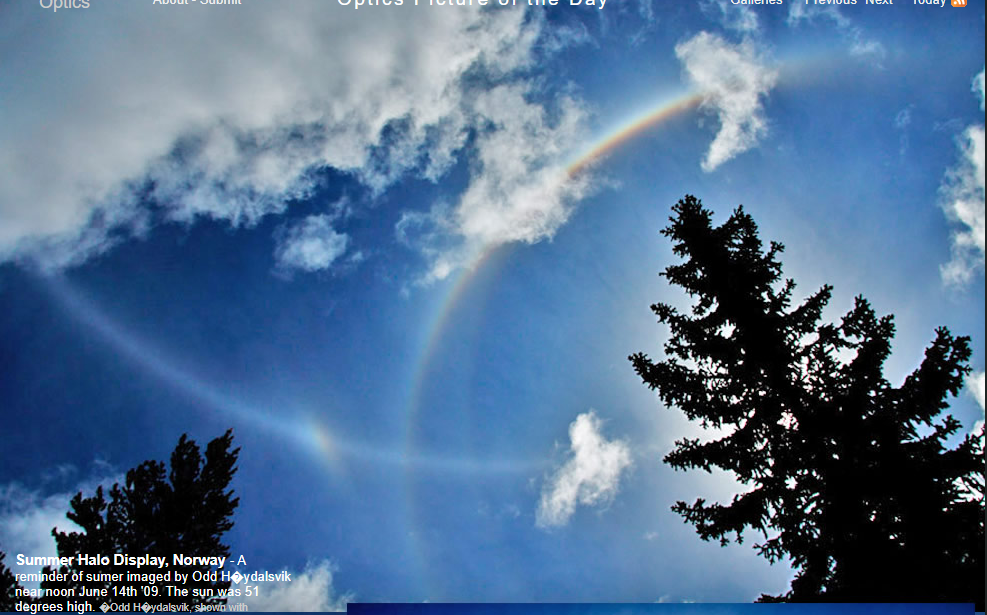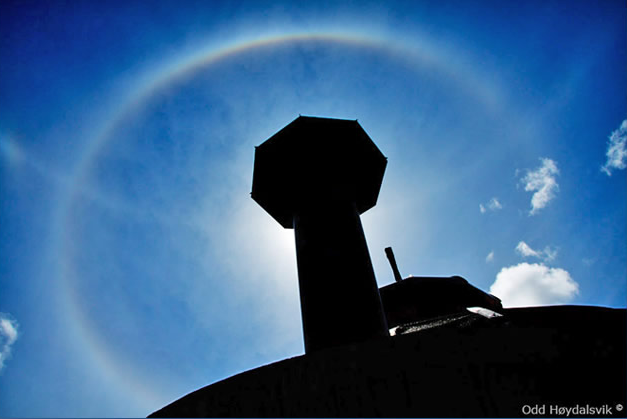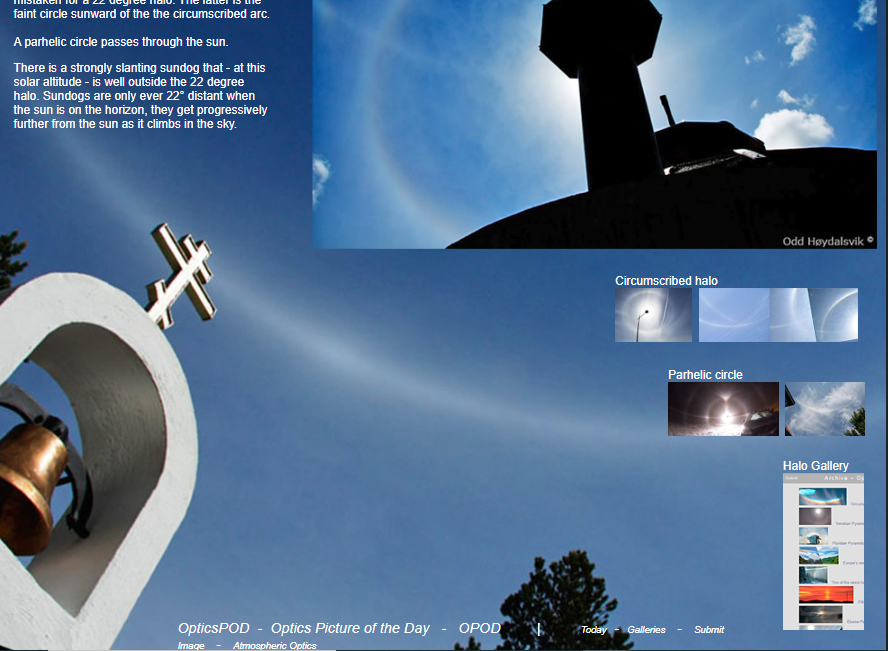Norwegian Halos
Norwegian Halos: A Stunning Display of Atmospheric Optics
Norway is known for its breathtaking landscapes, but it is also a haven for atmospheric optics enthusiasts. One phenomenon that captivates observers is the display of Norwegian halos. These mesmerizing optical effects occur when sunlight interacts with ice crystals suspended in the atmosphere. While the existing content provides a glimpse into this phenomenon, let's delve deeper into the intricacies of Norwegian halos and explore the various elements that contribute to their formation.
The Halo-Forming Crystals and High Cirrus Haze
Norwegian halos owe their existence to ice crystals present in high cirrus haze. These delicate crystals, shaped like hexagonal plates or columns, act as miniature prisms that refract and reflect sunlight. When light passes through these crystals, it undergoes a series of complex interactions, giving rise to the vivid and diverse halo displays witnessed in Norway. The high concentration of ice crystals in the cirrus haze contributes to the intensity and clarity of these halos.
The Circumscribed Halo: A Kaleidoscope of Colors
A prominent feature of Norwegian halos is the circumscribed halo, a vibrant and colorful ring that dominates the display. If the sun were positioned higher in the sky, this halo would appear almost circular, potentially confusing observers with the more common 22-degree halo. The 22-degree halo, however, is a fainter circle located closer to the sunward side of the circumscribed arc. The distinctiveness of the circumscribed halo in Norwegian displays adds to their allure.
The Parhelic Circle: An Enigmatic Path
Among the celestial phenomena accompanying Norwegian halos is the parhelic circle. This elusive feature passes through the sun and extends horizontally across the sky. It appears as a faint band of light that mimics the shape of the circumscribed halo. The parhelic circle is a result of sunlight being reflected and refracted by the ice crystals in the cirrus clouds. Its presence adds an element of intrigue and mystique to the overall halo display.
The Slanting Sundog: A Prismatic Delight
One of the most captivating aspects of Norwegian halos is the presence of a slanting sundog. Unlike the 22-degree halo, which remains at a fixed distance from the sun, the position of the sundog varies depending on the altitude of the sun. At higher solar altitudes, the sundog can be observed well outside the 22-degree halo, creating a striking visual effect. This phenomenon is a testament to the intricate interplay between sunlight and ice crystals in the atmosphere.
Appreciating the Norwegian Halo Display
To fully appreciate the grandeur of Norwegian halos, it is crucial to observe them in their natural environment. Norway's pristine landscapes and clean air provide optimal conditions for witnessing these atmospheric marvels. When observing a halo display, consider the following tips:
- Choose a location with an unobstructed view of the sky, away from light pollution.
- Look for high cirrus clouds, as they are more likely to contain the ice crystals responsible for halo formation.
- Be patient and observant, as halo displays can evolve and change over time.
- Take photographs to capture the ephemeral beauty of these optical phenomena.
Conclusion
Norwegian halos offer a captivating glimpse into the wonders of atmospheric optics. The interplay between sunlight and ice crystals creates a symphony of colors and shapes that mesmerize observers. From the vibrant circumscribed halo to the enigmatic parhelic circle and slanting sundog, each element contributes to the uniqueness of Norwegian halo displays. By immersing ourselves in these natural spectacles, we can deepen our understanding and appreciation of the intricate workings of our atmosphere. So, next time you find yourself in Norway, keep your eyes to the sky and witness the magic of Norwegian halos firsthand.

Summer Halo Display, Norway - A reminder of sumer imaged by Odd H�ydalsvik near noon June 14th '09. The sun was 51 degrees high. �Odd H�ydalsvik, shown with permission.

The halo forming crystals are in high cirrus haze.
A bright and colourful circumscribed halo dominates the display. If the sun were much higher it would be almost circular and easily mistaken for a 22 degree halo. The latter is the faint circle sunward of the the circumscribed arc.
A parhelic circle passes through the sun.
There is a strongly slanting sundog that - at this solar altitude - is well outside the 22 degree halo. Sundogs are only ever 22° distant when the sun is on the horizon, they get progressively further from the sun as it climbs in the sky.

Note: this article has been automatically converted from the old site and may not appear as intended. You can find the original article here.
Reference Atmospheric Optics
If you use any of the definitions, information, or data presented on Atmospheric Optics, please copy the link or reference below to properly credit us as the reference source. Thank you!
-
<a href="https://atoptics.co.uk/blog/norwegian-halos/">Norwegian Halos</a>
-
"Norwegian Halos". Atmospheric Optics. Accessed on April 19, 2024. https://atoptics.co.uk/blog/norwegian-halos/.
-
"Norwegian Halos". Atmospheric Optics, https://atoptics.co.uk/blog/norwegian-halos/. Accessed 19 April, 2024
-
Norwegian Halos. Atmospheric Optics. Retrieved from https://atoptics.co.uk/blog/norwegian-halos/.